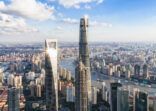Cumulative net inflows for Hong Kong-domiciled funds (northbound) reached a record high of RMB 12.9bn ($1.83bn) to 30 June, according to the latest data from China State Administration for Foreign Exchange (SAFE).
The inflows are the highest since the programme started in 2015, though the figure has fluctuated wildly since then.
The previous record for inflows was RMB 12.8bn in November 2017, followed by 14 consecutive months of net redemptions totalling RMB 4.7bn.
However, investors started to put in more money into the products in February this year. So far, June has been the best month this year for northbound funds.
Northbound net flows
|
Net inflows / (outflows) |
|
| December 2017 – January 2019 |
(RMB 4.73bn) |
| February 2019 |
RMB 75.5m |
| March 2019 |
RMB 1.34bn |
| April 2019 |
RMB 976.3m |
| May 2019 |
RMB 969.7m |
| June 2019 |
RMB 1.45bn |
| YTD total net inflows |
RMB 3.9bn |
| Net inflows since the programme started |
RMB 12.9bn |
Source: SAFE
Similarly, qualified domestic institutional investor (QDII) products, which also offer mainland investors offshore exposure, had net inflows of around RMB 347m during the first quarter after seeing net outflows of RMB 10.76bn in 2018, according to data from Morningstar Direct. The QDII scheme allows domestic fund managers to raise onshore money for offshore investments, within allocated quotas.
Local media reports recently said that investors have been investing more in QDII products to avoid exchange rate fluctuations. Investors are expecting more volatility in the renminbi, especially since the US dollar-Chinese renminbi exchange rate has breached the 7-mark for the first time since 2008.
The reports added that some QDII products, such as the Penghua Global High Yield Bond QDII fund, had to suspend additional subscriptions as they were reaching their maximum QDII quotas.
Both the MRF and QDII data should be positive for foreign asset managers participating in the MRF scheme, especially for those firms that recently received approval from the China Securities Regulatory Commission (CSRC) to launch their products in the mainland, including those managed by HSBC Global Asset Management, JP Morgan Asset Management and Haitong International.
Southbound funds
On the other hand, China-domiciled funds sold in Hong Kong (southbound) had their third consecutive month of net outflows. Last month, net redemptions amounted to RMB 28.6m, according to SAFE.
Southbound net flows
|
Net inflows / (outflows) |
|
| 2017 total inflows |
RMB 239.83m |
| 2018 total inflows |
RMB 96.55m |
| January 2019 |
(RMB 3.47m) |
| February 2019 |
RMB 6.01m |
| March 2019 |
RMB 12.14m |
| April 2019 |
(RMB 79m) |
| May 2019 |
(RMB 39m) |
| June 2019 |
(RMB 28m) |
| YTD outflows |
(RMB 132.7m) |
Source: SAFE
To date, Hong Kong investors have put far less money into mainland (southbound) funds than China’s domestic investors have put into Hong Kong-domiciled (northbound) funds.
Since the MRF scheme started in 2015, net inflows for southbound products totalled RMB 300m, which compares to northbound inflows of RMB 12.9bn, according to SAFE.
The SFC has approved around 50 China-domiciled funds to be sold in Hong Kong, with E Fund Management’s China Bond 7-10 Year CDB Bond Index Fund being the latest to join the programme in April. However, only two dozen funds have been made available for sale to investors, according to SFC records.

















